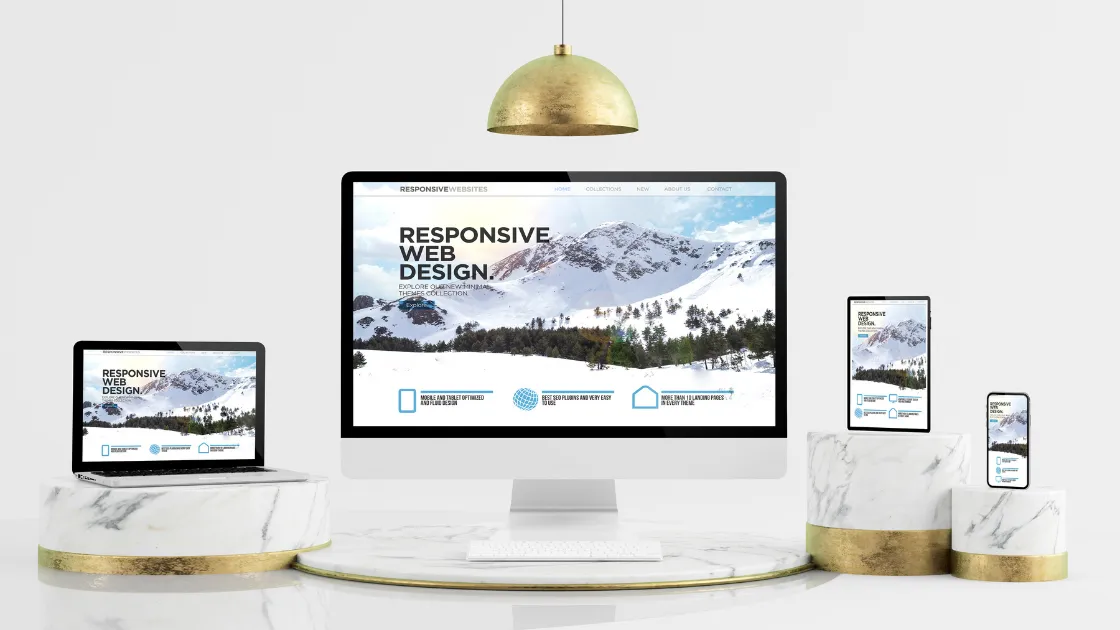
A well-designed website can attract, engage, and convert visitors — but a poorly designed one can quickly drive them away. Many businesses unknowingly make design mistakes that hurt user experience and reduce performance. Let’s explore the most common website design mistakes in 2025 and how to fix them effectively.
1. Cluttered Layout
The Problem:
Too many elements on a page (text, images, ads, popups) can overwhelm visitors and make the website hard to navigate.
The Fix:
- Use white space to give content breathing room.
- Focus on simplicity and hierarchy — guide users to key actions.
- Keep the design clean and organized.
2. Slow Loading Speeds
The Problem:
A slow website frustrates users and hurts SEO rankings. Most people leave if a site takes more than 3 seconds to load.
The Fix:
- Optimize images (compress without losing quality).
- Use browser caching and a CDN (Content Delivery Network).
- Minify CSS, JavaScript, and HTML files.
- Choose fast and reliable hosting.
3. Not Mobile-Friendly
The Problem:
In 2025, most traffic comes from smartphones. A non-responsive design alienates mobile users.
The Fix:
- Use responsive design so your website adapts to all screen sizes.
- Test your website on multiple devices.
- Prioritize mobile-first design principles.
4. Poor Navigation
The Problem:
Complicated or confusing menus make it hard for visitors to find what they need — leading to higher bounce rates.
The Fix:
- Keep your navigation simple and intuitive.
- Use clear labels and limit the number of menu items.
- Add a search bar for easy access.
5. Inconsistent Branding
The Problem:
Using different fonts, colors, or styles across pages makes your website look unprofessional.
The Fix:
- Follow a consistent brand style guide.
- Use the same color palette, typography, and tone throughout.
- Reinforce your brand with logo placement and messaging.
6. Unreadable Text
The Problem:
Tiny fonts, poor color contrast, or too much text can make content hard to read.
The Fix:
- Use legible fonts (16px or larger for body text).
- Ensure good contrast between text and background.
- Break up content with headings, bullet points, and images.
7. Missing Clear Call-to-Actions (CTAs)
The Problem:
If visitors don’t know what to do next — like “Contact Us” or “Buy Now” — they’ll likely leave.
The Fix:
- Add clear and compelling CTAs on every page.
- Use action words like “Get Started,” “Book a Call,” or “See Pricing.”
- Make CTAs stand out with buttons and contrast.
8. Ignoring SEO Best Practices
The Problem:
A website without SEO-friendly structure won’t appear in search results.
The Fix:
- Use proper HTML tags (H1, H2, alt tags for images).
- Write meta titles and descriptions for each page.
- Ensure your website is indexable and crawlable.
- Use internal linking to guide users and improve rankings.
9. Autoplay Audio or Videos
The Problem:
Unexpected sounds can annoy users and cause them to leave the site immediately.
The Fix:
- Avoid autoplaying media.
- Let users choose when to play videos or audio.
- If autoplay is needed, mute it by default.
10. Broken Links and Errors
The Problem:
Dead links, 404 errors, or non-functioning buttons damage credibility and frustrate visitors.
The Fix:
- Regularly audit your site for broken links.
- Use tools like Google Search Console or Broken Link Checker.
- Redirect 404 pages to relevant content when possible.
Final Thoughts
Great website design is not just about looking good — it’s about functionality, clarity, and experience. By avoiding these common mistakes and applying the right fixes, you’ll create a website that looks professional, performs well, and keeps users coming back.
Tip: Always test your website with real users or get feedback to identify design flaws early and improve continuously.


